Merry Christmas Everyone,
Welcome to the last Prowler Blog post for 2016. I hope you all have had a happy holiday season. The day job has been busy for me this holiday season. But, I did manage to get a few good groups of days off in early Nov and early Dec that allowed me to make one last big push on the 400 ton press. I also have a couple of really nice builder updates from the past few months. Here's the list for this update:
Prowler Items
1. 400 Ton Press Hydraulic Unit
2. Builder Updates:
2.A. Francis - Continues His Fantastic Progress
2.B. Ray - Getting Ready For FAA Inspection
2.C. Ernest - Getting Ready For EAA 2017!
Non-Prowler
3. EAA Flight Simulator Made Successful Debut
I don't have too many items for this update. That's probably a good thing, as I don't have a lot of time to get this update posted! Before I start this update, I wanted to reflect a little on this year and highlight the bigger accomplishment for Prowler Aviation this year.
The year 2016 started out in a big way with the movement of 2 Prowler kits. First, was the sale of Kit #6 to Eric in Montreal. That was the kit that Byran and I saved from the recycling bin 2 years earlier. We cleaned it up, completed it, boxed it, advertised it in several places, and eventually found a new home for it! The second was the sale of kit #15 from Dr. Peper in TX to Frank "Pancho" Kinkaid also in TX. It's great to have 2 new owner/builders onboard!
Throughout the rest of the year, the 400 ton press repairs pretty much dominated my Prowler time and attention. The year started off pretty well, when I got the cylinder back from the machine shop. But, the ram rebuild took months longer than I'd anticipated. In the end, I got the press back together and tested in early summer, just before leaving home for weeks to work and head to AirVenture. Later, in this update, you'll see I made one last push lately to get the press going. It's real close to done.
Also this year, I got my 1st opportunity to visit EZ in the Seattle area. He picked my up at my hotel while on a layover in SEA and we went to see his Prowler. He'd been working on it and repairing it for over a year - getting it up to the condition he wanted it to be in. When I was there, we discovered that his flap actuator assembly had gotten bent, and I went to work the next week to get his actuator repaired and back to him. It worked great and he's got his flaps working very well again. Overall, he's doing great work and is promising to have a Prowler at AirVenture next year in 2017. It's gonna be great!
At various times throughout the year, I got some good forward progress on several of the outstanding parts and assemblies that I need to complete kit #18 that is inhabiting my office over the shop. My new year's resolution for 2017 is going to be to focus on getting that kit completed and up for sale.
I also got a couple of AWESOME opportunities to get up to see Ray and drive his Prowler around in taxi tests. Thorough the years, Ray has offered such incredible support to me and given me so much inspiration to keep going with this whole Prowler project. It's times like getting into his airplane and taxiing it around the Camarillo airport that helps to keep me motivated and to keep me going in the pursuit to get this airplane back into some kind of limited production. I cannot thank you enough, Ray!
It's been a great year to watch the progress of Francis on his Prowler project and help him along the way with info or drawings. He is doing such a great job and is always happy and willing to share all of his photos and information about his project. It's great to have his progress to report on during my blog updates. Thank you for sharing, Francis. I really appreciate it.
Overall, while still small, it's been a busy, productive and exciting year for the Prowler community. I'm looking forward to growing the community more in the coming years, as I eventually get some production going.
And, now, on with the show. Here's the latest update.
Prowler Items
1. 400 Ton Press Hydraulic Unit - When dad and I first got the 400 ton press re-configured and put together, we needed a hydraulic unit to test the press with. I had an old Williams Model 30 unit kicking around that came with all the stuff that I got from George. Early on, dad and I made up a mounting frame and bought a new 3 hp motor for it and installed it on the wooden platen press that I had gotten from George. Dad made up a nice sliding mount for the motor to tighten the belt and we made a nice mounting system for the hydraulic unit. It's all on a base that will collect any oil that leaks. You can see it here:
At that time, it was only set up to put out 1200psi and it worked OK for running the press that had wooden platens and was being used to press soft aluminum with wooden dies.
But, to run the 400 ton press, I needed a hydraulic unit capable of 2500psi. I was able to look up the company that bought the Williams company and got some useful info on this Model 30 hydraulic unit. The engineer there told me that the pump was capable of 5000psi at approximately 10gals/min. He told me how to re-set the pump output pressure and we took the unit apart and got it set for the correct pressure. I did the calculations to determine how much volume of oil that I would need to have to make the 400 ton press cycle the amount I needed. We needed to increase the volume of oil that the tank could hold, so dad and I came up with a speedy solution to simply add another reservoir alongside the Model 30 tank. I did some additional plumbing and we came up with this temporary unit we could use to test the press:
It worked OK for testing the 400 ton press, but I found out a few things while testing. First, the additional tank was awkward and even though it was connected with 1-1/4" pipe, the oil didn't flow thru it easily. Then, at about 2000psi the pump would snub out the motor. The motor obvisouly wasn't strong enough.
However, now that I have the press rebuilt and I have not spared any expense to make it right, I also wanted a hydraulic unit that would work well, look good, and fit on top of the press - to save space. My two basic options were to: A) Build a new hydraulic unit from scratch; or, B) remodel/improve the Williams unit. After some thought, measuring, and calculations, I decided that the old Williams Model 30 could be made to do the job. So, the first thing I did was take the pump back out of the unit:
Next, I cut the top off the old Model 30 so that I could enlarge the tank. By doing this, I could accomplish two things at one time. First, I could increase the volume of oil that the tank could hold to what I needed (almost 10 gals); and second, I could keep the control valve mounted on the same place that it was before. This would prevent having to do more work to set up a new control valve arrangement. Here's what it looked like with the top cut off:
I cut up 4 pieces of 1/4" steel plate that were 8" high. Those would make an extension that I could "splice" into the tank. I tack welded them in place and this is what it the new tank was shaping up to look like:
After that, I took the tank to my buddy Max to have him weld it up. He's an awesome welder and has the right tools for the job. While the tank was off for welding, I got to work on mounting frame. I sat the mounting frame on top of the press and it fit nicely - nearly the exact same size as the top of the press! Even better still - there were already 4 bolt holes cut into the top of the press slabs that were threaded for 1/2" bolts!! All I had to do was cut 4 pieces of angle iron, drill 1/2" holes in them and slide them under the frame and put some 1/2" bolts in the holes - like this:
Then, I tack welded the new legs on (being careful not to burn the new paint job on the press). Then, I took the whole assembly down, finished welding the feet on and painted it up a bit. I also added a small gusset to each foot so that it would stiffen the feet and prevent any vibrations from breaking any of the welds. Here is the finished mounting frame (upside down):
Moving on, the motor was next. Now, as I mentioned earlier, when we were testing the 400 ton press (and found the leaking seal), I had discovered that the 3 hp motor was not powerful enough to turn the Williams Model 30 pump to produce the required 2500psi. The pump would stall the motor out at about 2000psi. So, I was going to need a bigger motor. I decided (mostly guessed) that if 3hp got me 2000psi, then hopefully, 5 hp would get me the 2500psi that I needed.
As chance would have it, I found a gent that was advertising a Baldor single phase 5 hp motor on Craigslist. He said that it had a 1.125" shaft size. I pulled the pulley off of the 3 hp motor and measured it......it was also a 1.125" shaft size. That'd be convenient! I decided to go for it and I bought the motor. Turns out, the motors both had the same shaft height above the mounts:
And, they both had the same bolt hole pattern on the motor mounts!!!! Check it out:
This was AWESOME!!! The shaft sizes matched, so I didn't have to buy any new pulleys. The motor mounts matched, so I didn't even have to drill or tap any new holes. The new Baldor 5 hp motor literally just bolted right into place. All I had to do was install the drive pulley on it and buy a new belt that would handle the 5 hp load. Sweet! Here is the mounting frame installed on the press with the motor installed on it:
I got the tank back from Max and cleaned it up and gave it a new paint job:
Then, it got installed on the mounting frame too. One of the points of consideration in extending the Williams tank, was that it too could be mounted back on the same frame without any modifications. Here it is installed back on the new press:
At this point, I took some measurements and spent a small fortune ordering hydraulic hoses and fittings for the "new" hydraulic system. Most of the expense came from the 1" hydraulic lines and fittings that I needed. I designed the new hydraulic system to try to reduce the time it takes for the ram to move down under it's own weight.
When initially testing the new press, it was literally taking 15mins for the press ram to move from the up position to the full down position. I figured it was the restriction of the small diameter hydraulic hoses and fittings that was preventing the oil from freely flowing back into the reservoir. I hoped that by providing a minimum diameter of 1" from the press cylinder all the way to the reservoir - the time would decrease by a lot. (Turns out, this was correct - the time to cycle the press down is now 35 seconds).
Here is a pic of the hydraulic unit with the motor installed, the pump installed in the tank, and some of the plumbing completed. Note the red low pressure, 1" hydraulic hose return to the top of the tank:
Here is the press with the pulleys and belt installed (but not tightened) on the unit:
Next step was to hook up the motor electrically. I had to fabricate a bracket to hold the switch box, then install the box and hook up the wires. It made for a nice, clean installation:
I finally got the last of the 1" hydraulic valves I needed and was able to complete the hydraulic plumbing. Here is the front side of the hydraulic unit with the extra relief valve installed off the main high pressure line going down the side to the back of the press:
This was a test fitting of the 1" high pressure line from the press cylinder to the dump valve that will be mounted on the front of the press:
Here is the bracket that I made up to mount the dump valve to the press:
And the valve test mounted in place:
Eventually, I got all the hydraulic plumbing in place and tested the system. It worked great! The press cycles up in about 65 seconds with no leaks at full 2500psi of pressure. Then, it cycles down in about 35 seconds. Here's how I operate the press now:
A. Turn the power on;
B. Make sure the dump valve is closed.
C. Place the die and blank.
D. Pull the valve control handle to raise the bolster;
(pressurizes the cylinder and raises the ram)
E. After the pressure builds (and the part is formed) release the valve;
F. Open the dump valve;
G. When the bolster drops - remove the die and the formed part.
After getting the press working, it was time to start moving it towards its new home spot in the shop. To do this, I used the mobile base that I had designed and built for the press. All it takes is a 3 ton floor jack (to lift the yoke in the back) and a small cable hoist to give it a gentle pull. It was a little too much for me to just push it by myself, but two guys might be able to push it by hand. Anyway, I was on my own for this move, so I used a cable hoist dogged off to some anchors in the floor:
To get the press all the way to where is will live permanently is going to require me to break down my main wing spar and move 1/2 of the wing jig out of the way. That's going to take a little bit of work. While doing this, I'm also going to take advantage of the opportunity to move my air compressor out too, as well as a set of mobile shelves. The compressor is going to go out in the diesel generator shack (so I won't have to listen to it in the shop) and the rolling shelves will probably go out there too - for the meantime.
The very last thing to do with this press is find a block of rubber for it. Actually, urethane. I'm not having a lot of luck finding a solution that I like at a cost that I like. More to follow in this in a future update.
2. Builder Updates:
2.A. Francis - Continues His Fantastic Progress -
Francis has really been "knocking it out of the park" lately and making fantastic progress on his Prowler. Here are some of the recent pics he has sent me of the work he's been doing. In no particular order is:
Torque box access holes:
Torque box assembly:
One torque box with the pivot bracket installed:
Torque boxes ready to install:
Here are the MLG torque shafts installed into the spherical bearing on the main center section spar:
Aft end of the torque box. Looks like fitting the clips that attached the aft end of the torque box to the rear spar:
MLG torque shafts and torque boxes installed into the wing:
Torque shaft inside the torque box - nice job on the access holes and access plates!:
Torque box aft attachment to the rear spar:
Overall picture of the entire wing:
The last series of pix from Francis show that winter has arrived in France! It was time for him to re-assemble the heated tent inside the hangar:
Great idea for making a warm space to work inside the hangar:
Awesome progress, Francis!! You are doing a great job on your Prowler build!! We are all looking forward to more progress pics.
2.B. Ray - Getting Ready For FAA Inspection - Ray currently has his PSRU apart for some final work and inspection. As soon as it is back together, he has Dave Prizio lined up to do the Airworthiness Inspection for his experimental certificate.
In the meantime, he's also been working on modifying some of his MAC servos to improve the response time. He's been experimenting with various DC-DC converters. By putting higher DC voltages on his supercharger wastegate, he can get it to change positions (and power outputs) a little quicker. I expect that my next blog update in 2017 I will be covering the results of Ray's airworthiness inspection. More to follow.
2.C. Ernest - Getting Ready For EAA 2017! - EZ is making more excellent progress on getting his Prowler ready to take flight again. I recently got to see him again during an overnight in SEA. Here he is working on installation of the coil selector diodes for each spark plug:
We jacked the airplane up and swung the gear a few times to check out the MLG system(s).
Here's the MLG hydraulic actuator on the LH side:
He had the inner doors off - so we were trying to trace out the door actuating system through the sequencing valves:
Later, EZ sent me a pic of the completed diode installation:
Here is an access door he added for getting to the battery (charging) and checking the oil:
Nice work, EZ!!! Looking forward to hearing about your next "first flight". If I'm around, I'd like to be there! Let us all know. Thanks.
Non-Prowler
3. EAA Flight Simulator Made Successful Debut - Mr. Bill was the man who had the idea for making a mobile simulator that I've been working on. Well, Mr. Bill decided that he really wanted to have the mobile simulator exhibited at the local version of the Maker's Faire. I really didn't know what that was all about.....but I did know that I wanted to get this project closer to the finish line and off my plate of things to do. So, I started to make one last push to get this project across the finish line. Here is the power outlet installation in the engine bay of the sim to power the computer, screens and fans:
I had to fabricate a box to mount the computer inside of. This sim will be dragged around to various places, possibly in rainy conditions....so, the computer has to be protected, but yet well ventilated. I went down to my scrap pile and found and old aluminum pan that I'd scavenged from somewhere. I cut it and folded it to make two halves that I could put together and then put an end cap on to enclose the computer. Here is the bottom half with the ends installed and the computer being test fit into the box:
The feet on the bottom will allow for mounting the box to studs in the engine bay - like this:
Back on the work bench to finish the top and finish the installation of the end caps:
Add a 3 hinges and a ventilation fan:
And, add some power cord penetrations for the computer and the fan:
One final test fit before mounting the computer in the engine bay for good. Oh - notice the stuffing tube added to the lower left corner of the box. This is to allow for the USB cords and other wires to go between the computer and the other components (Screen, yoke, rudder pedals, etc.):
Oh, yeah, it also needed a door to access the CDROM drive:
Now, it's fully ready to go:
Speaking of rudder pedals, I also had to finish the front floor installation and mount the pedals:
Here is the sim cockpit with the monitor final installation, the instrument panel installed, the computer yoke, and the front floor with the rudders installed;
At this point, I only had one problem left to solve. There was no way to control the TV because the IR receiver was buried behind the instrument panel. So, I took the TV back out and put a long extension on the 9 wires that connected the IR receiver panel to the TV:
Then, I cut a hole in the instrument panel just slightly smaller than the height of the IR receiver panel. Next, I added the computer's LED indicators and power switches to the TV's IR receiver panel. Then, I installed the whole thing onto the right side of the instrument panel. The last thing I needed to do was mount the TV remote just below the IR receiver panel. To do that, I epoxied a strip of aluminum to the back of the remote and simply screwed it into the instrument panel below the IR receiver panel. So, now the computer controls and the TV controls are all combined into one area that looks like this:
It's perfect! Control for the computer (including the wireless mouse), control for the TV (can't loose the remote) are all there in one place!
Here is the simulator being set up in the Civic Auditorium for the Maker's Faire by yours truly and Jeff (the computer IT specialist that built the computer for the simulator). We're getting everything set up for the show:
Here was our 1st customer flying the sim - a CAP cadet who had never before flown an aircraft or a simulator:
The simulator performed very well:
We were the hit of the show. There was a line to fly the simulator for the entire 6 hours of the faire (from 10am to 4pm).
We let each kid fly the sim for about 3 minutes - just long enough to do a very tight circuit at KRDD. We were able to get around 65-70 thru the sim that day:
The feedback was 100% positive. The kids loved it:
Seeing the positive response to this simulator made all the hundreds of hours of work that I put into this project really worth it! It's great to see kids get so excited about aviation and flying. While there is still a lot of work to do to the simulator, this was a great validation of the concept and proof that Mr. Bill had a great vision!!
It was a superb event! Great job and well done to everyone involved!
OK. That's all for this update. Thank you all for your interest in Prowler Aviation. I hope you had a great 2016. I look forward to seeing you all again next year.
Wednesday, December 28, 2016
Subscribe to:
Post Comments (Atom)







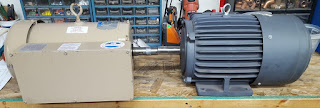









































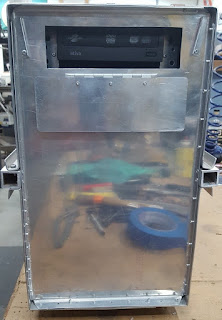












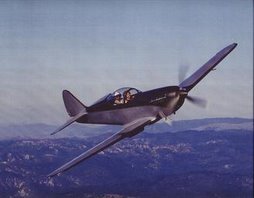
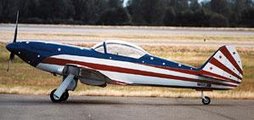
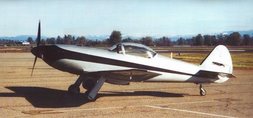
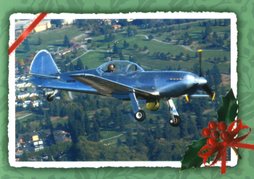
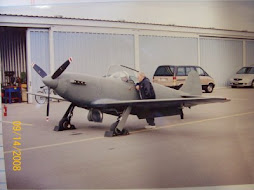
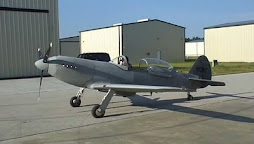

No comments:
Post a Comment